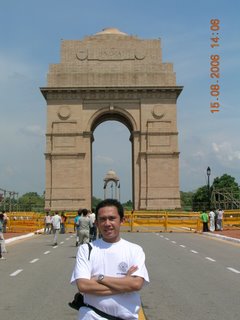Although FIG. 1.1 in below is useful in imparting the essential features of a water cycle driven by the excess of incoming over and outgoing radiant energy, this representation fails to provide an adequate framework that can be obtained by adopting the so-called system notation, in which the paths of water transport link the major sources of moisture storage, as presented by Dooge (1973) in FIG. 1.2.

FIG. 1.2. The hydrological cycle in system notation
(modified from Dooge, 1973).
A closer examination of FIG. 1.2. reveals that hydrologists do not in fact concern themselves with the whole of the hydrological cycle. The oceans are the province of the oceanographer, the atmosphere is studied by the meteorologist, and the lithosphere by the geologist. What remains is commonly referred to as the land phase of the hydrological cycle. This subsystem, whose limits are shown by the broken line in FIG. 1.2., receives an input of precipitation, P, and produces outputs in the form of evaporation, E, and river flow, Q. Further subdivision is possible in order to demarcate the interests of other specialist groups. For example, the soil scientist may confine his interest to the upper soil horizons, which receive water by infiltration, F, or capillary rise, C, and lose water by evaporation, E, deep percolation, R, or throughflow, Qi. Nevertheless, despite the improvement in the level of comprehension afforded by FIG. 1.2. over FIG. 1.1., an additional important element is missing – that of the influence of man.
Since time immemorial, man has manipulated his environment, and therefore the land phase of the hydrological cycle, for his own purposes. Wildscape has been cleared for agriculture, forests have been felled, swamps have been drained and, most important of all, towns and cities with all their associated infrastructure have been created in what were once rural areas. Over the last 25 years, increased attention has been devoted to the hydrology of land use changes in general, but only the process of urbanization has given rise to a new and recognizable branch of the subject – urban hydrology.
Perhaps the most obvious definition of urban hydrology would be the study of the hydrological processes occurring within the urban environment. However, further consideration of the hydrological cycle of an urban area, as presented in FIG. 1.3., soon reveals the inadequacy of this simplistic conception. The natural drainage systems are both altered and supplemented by sewerage. The effects of flooding are mitigated by flood alleviation schemes or storage ponds. In the initial stages of urban development, septic tanks are employed for the disposal of domestic wastes. As the urban area grows, foul sewerage systems discharging to sewage treatment works are installed, and the treated effluent is returned to local watercourses or even the ocean. Initially, water supplies are drawn from local surface and groundwater sources at minimum cost, but as the population increases the demand for water rises, further supplies may only be obtainable from more remote locations. Both waste disposal and water supply therefore extend the influence of the urban area well beyond its immediate boundaries. Urban hydrology may consequently be defined in more appropriate terms as the study of hydrological processes both within and outside the urban environment that are affected by urbanization.

FIG. 1.3. The urban hydrological cycle.
Posted by: JRP
[+/-] Read More...
[+/-] Summary only...










